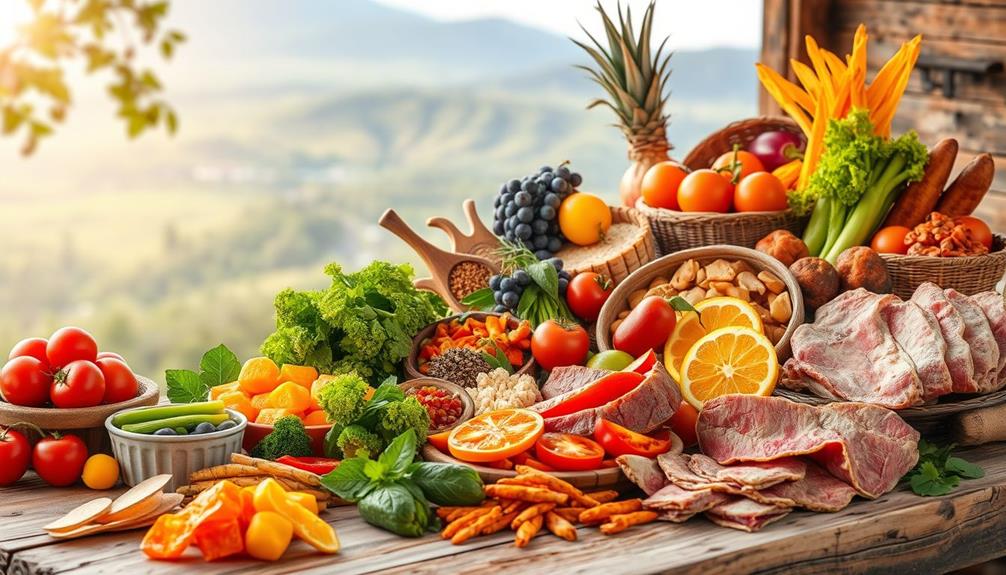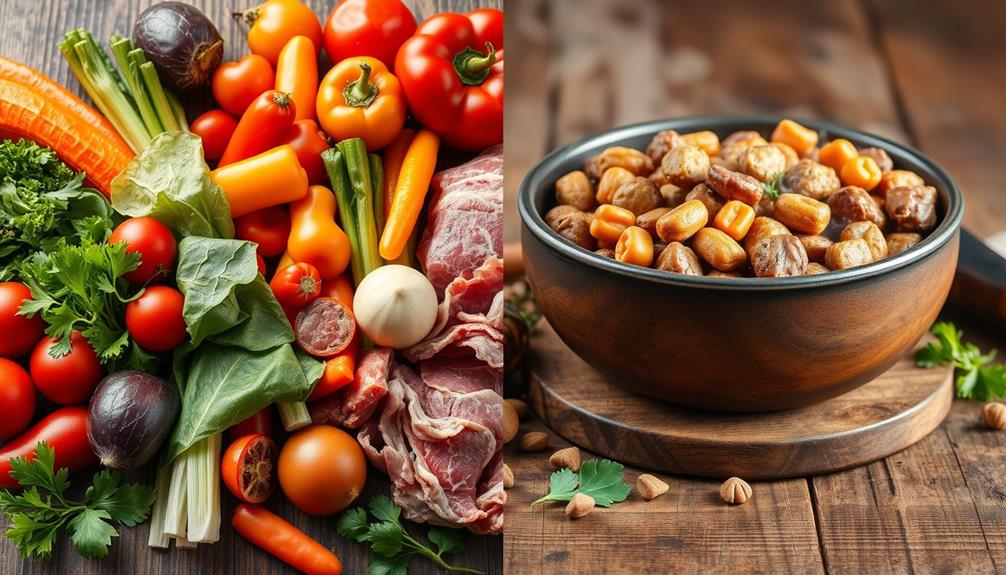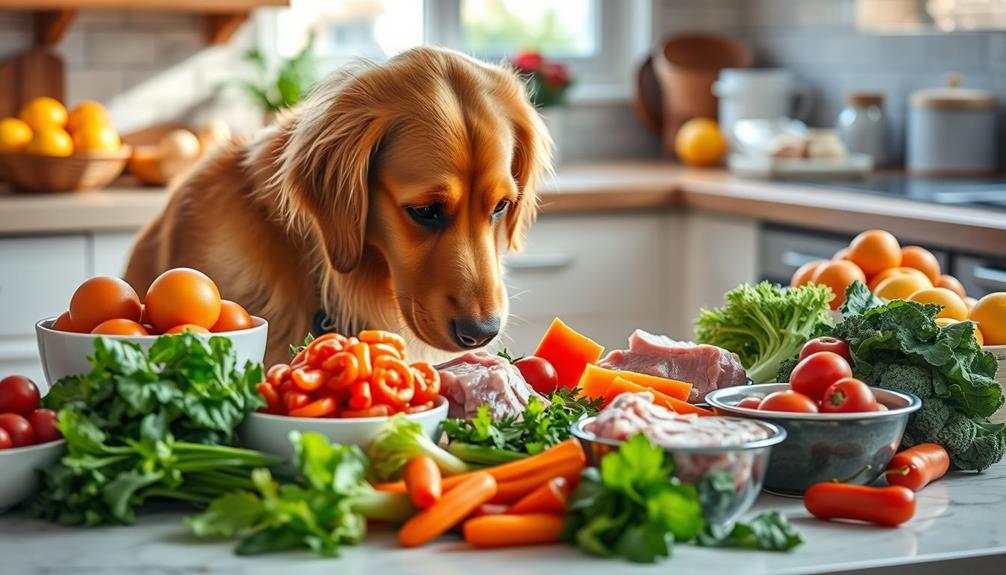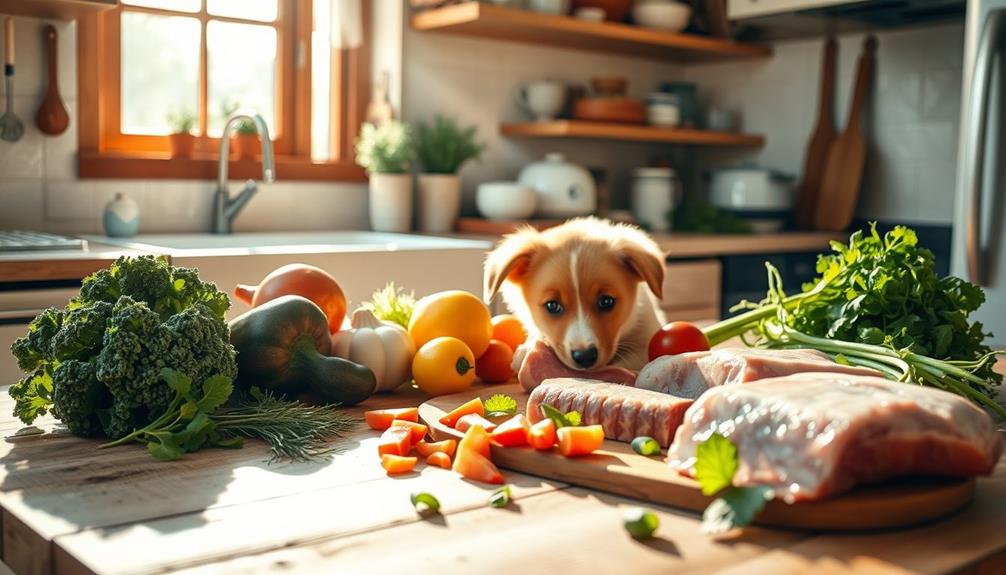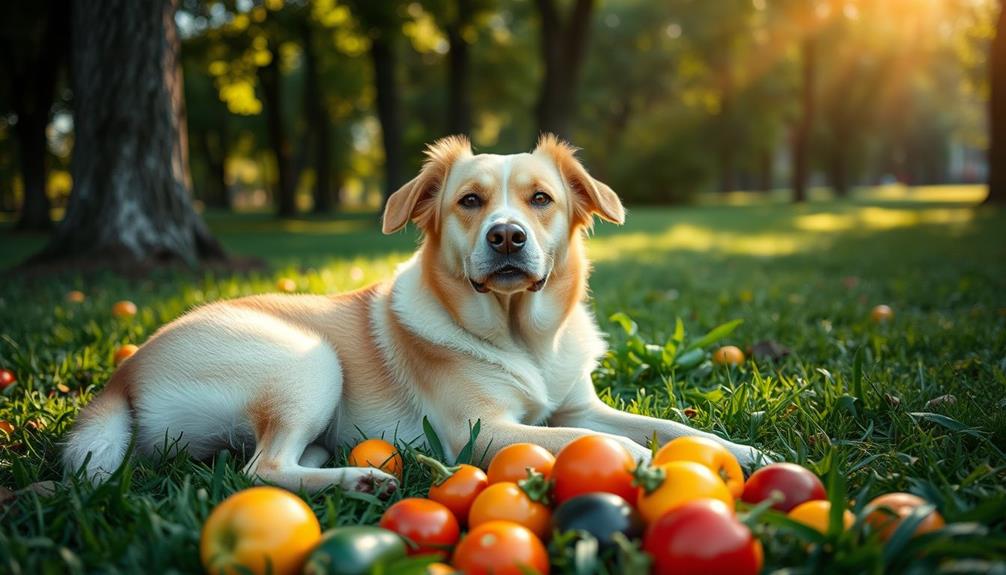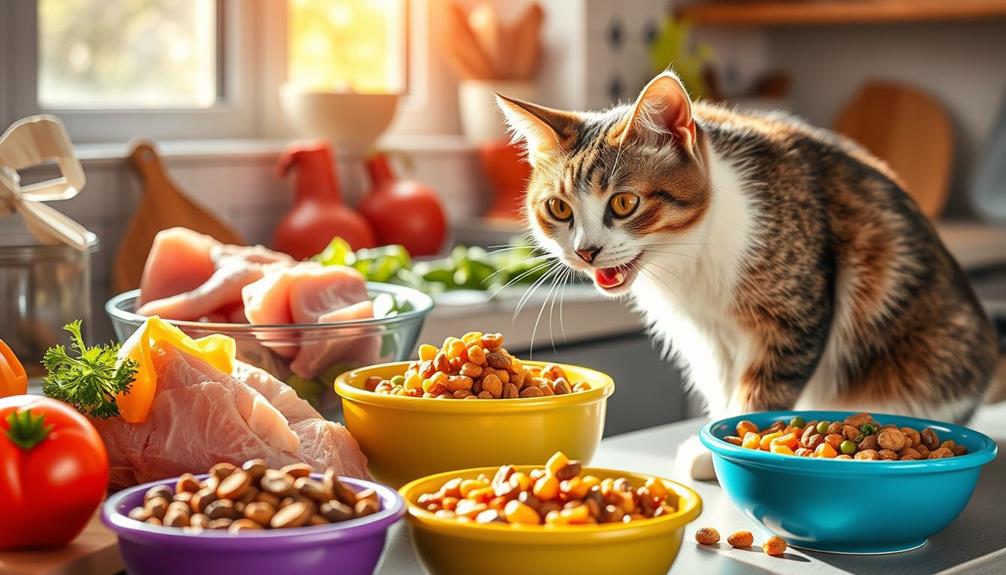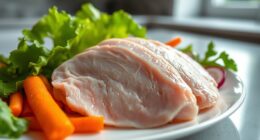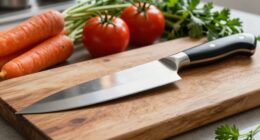Freeze-dried raw food can be a great option for your dog. It retains essential nutrients while being convenient and lightweight. With a shelf life of 1-5 years, you won't have to worry about spoilage. However, keep in mind that it often requires rehydration and can be pricier than traditional kibble. While it usually offers high protein and fewer fillers, some products might lack complete nutritional balance. Always check for quality ingredients and follow recommended feeding guidelines to guarantee your dog stays healthy. Curious about the right brands and tips for feeding? There's much more to explore!
Key Takeaways
- Freeze-dried raw food retains essential nutrients, proteins, and probiotics, making it a nutritious choice for dogs.
- It has a long shelf life of 1-5 years, offering convenience and easy storage.
- High-quality options are usually high in protein and grain-free, aligning with a natural canine diet.
- Some freeze-dried raw foods may lack complete nutrition and require careful selection to meet AAFCO standards.
- Rehydration is necessary before serving, adding preparation time compared to traditional kibble.
Understanding Freeze-Dried Dog Food
When it comes to feeding your dog, freeze-dried dog food offers a unique and convenient solution. This raw meat-based diet undergoes a meticulous process of freeze-drying, which involves freezing the food, followed by sublimation to remove moisture. This method maintains the original taste, smell, and appearance of the ingredients while preserving around 5%-7% moisture, compared to over 70% in frozen food. The result? An extended shelf life of one to five years.
Additionally, incorporating essential oils, such as eucalyptus oil, can promote respiratory health for your dog, enhancing their overall well-being.
Nutritional integrity is a key feature of freeze-dried dog food. It provides high-quality raw nutrition, ensuring that proteins, fats, and probiotics remain intact. Unlike dehydrated foods that undergo heat treatment and may lose crucial nutrients, freeze-dried options retain essential vitamins and minerals due to minimal processing.
The convenience of freeze-dried food is another major advantage. You won't need refrigeration, and it's lightweight and easy to prepare, making it ideal for travel or quick meals. By choosing freeze-dried dog food, you're ensuring your furry friend gets a nutritious meal without the hassle of traditional raw diets.
Benefits of Freeze-Dried Dog Food
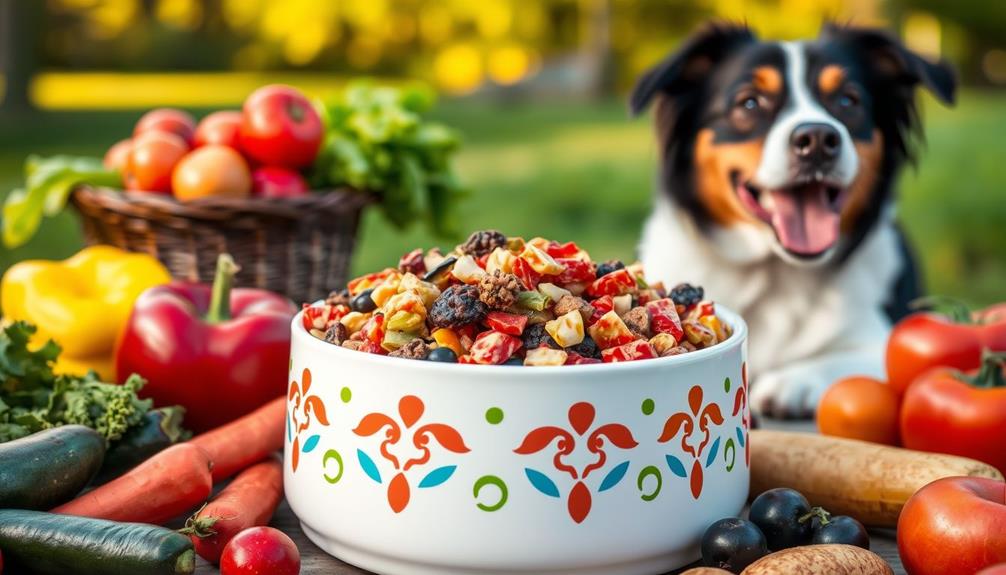
Freeze-dried dog food boasts multiple benefits that make it an excellent choice for pet owners seeking quality nutrition. This type of food not only enhances your dog's mealtime experience but also supports overall pet health.
These foods can be particularly beneficial for pets with specific dietary needs, as they often contain fewer fillers and artificial ingredients compared to traditional dog food. Additionally, freeze-dried options can cater to a variety of breeds and sizes, ensuring that all dogs receive the nutrition they require proper diet for pets.
Here are some key advantages:
- Nutritional Integrity: The freeze-drying process preserves essential vitamins and minerals, ensuring your dog gets crucial nutrients.
- High Protein & Grain-Free: Freeze-dried dog foods are typically high in protein and grain-free, providing a nutrient-dense diet that mimics a natural canine diet.
- Digestibility: These foods enhance digestibility, improving your dog's health, skin, coat, and immune system function.
- Convenient Storage: With a shelf life of one to five years, freeze-dried dog food offers convenient storage options for busy pet owners.
Drawbacks of Freeze-Dried Dog Food

Despite the many benefits freeze-dried dog food offers, there are notable drawbacks that pet owners should consider.
First, freeze-dried options can be expensive, often averaging around $33 per pound compared to traditional kibble, which typically costs $10-11. This higher price point might strain your budget.
Additionally, considerations for cold medications could relate to ensuring your pet's diet supports their overall health, just like how selecting the right cold medication is vital for effective relief in humans.
Furthermore, some freeze-dried dog food may not provide a complete nutritional balance and mightn't meet AAFCO standards for all life stages, which raises concerns about your dog's overall health.
You'll also need to rehydrate the food before serving, adding extra preparation time and reducing convenience compared to dry kibble.
Moreover, the freeze-drying process may not eliminate all pathogens, creating potential health risks for both your pet and yourself, especially if anyone in your household has a compromised immune system.
The possibility of food-borne illnesses remains a concern, with AAFCO advising caution regarding raw food diets.
Considering these factors, it's important to weigh the pros and cons of freeze-dried dog food, keeping pet safety and nutritional needs at the forefront of your decision-making.
Choosing Quality Freeze-Dried Food
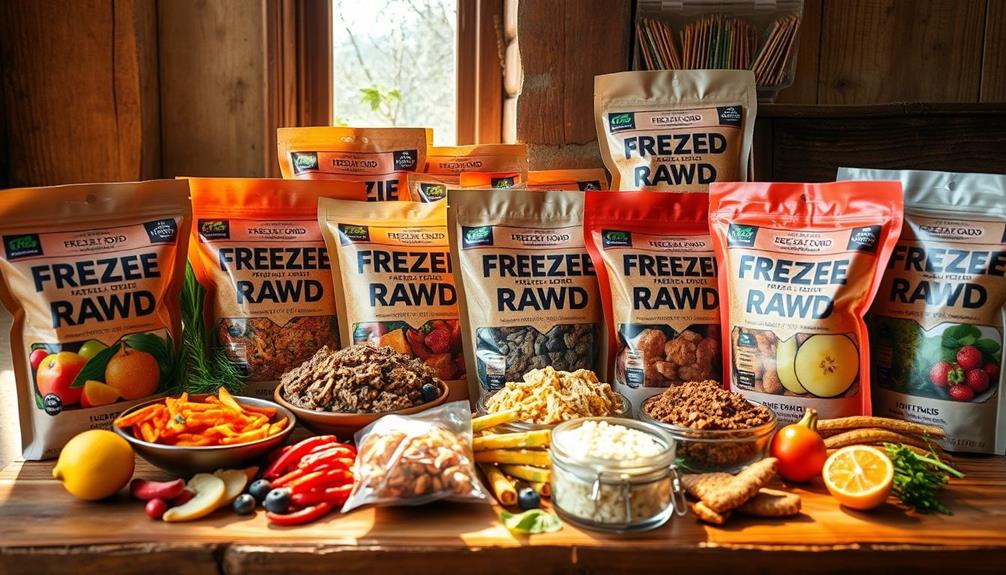
Choosing quality freeze-dried dog food is essential for guaranteeing your pet receives the best nutrition possible. When you're on the hunt for the right product, keep these key points in mind:
1. High-Quality Animal Proteins: Look for freeze-dried options where animal proteins are the main ingredients, including organ meats and omega-3 fats, to support your dog's health.
Additionally, incorporating high-quality proteins can mirror the benefits seen in natural diets, which often lead to better overall health for pets.
2. Raw Food Labeling: Confirm the food is labeled as raw. This means it hasn't been pre-cooked, preserving the nutritional benefits of the ingredients.
Consuming raw food can have advantages similar to those seen with juice diets in humans, as it helps maintain nutrients.
3. Avoid Synthetic Additives: Stay away from freeze-dried dog foods containing synthetic vitamins and minerals, as well as high-fat content (30% or more) or starchy ingredients like legumes and grains, which can compromise nutrition.
4. AAFCO Standards: Quality freeze-dried dog food should provide a complete and balanced diet that meets AAFCO standards for all life stages.
Feeding Guidelines and Tips
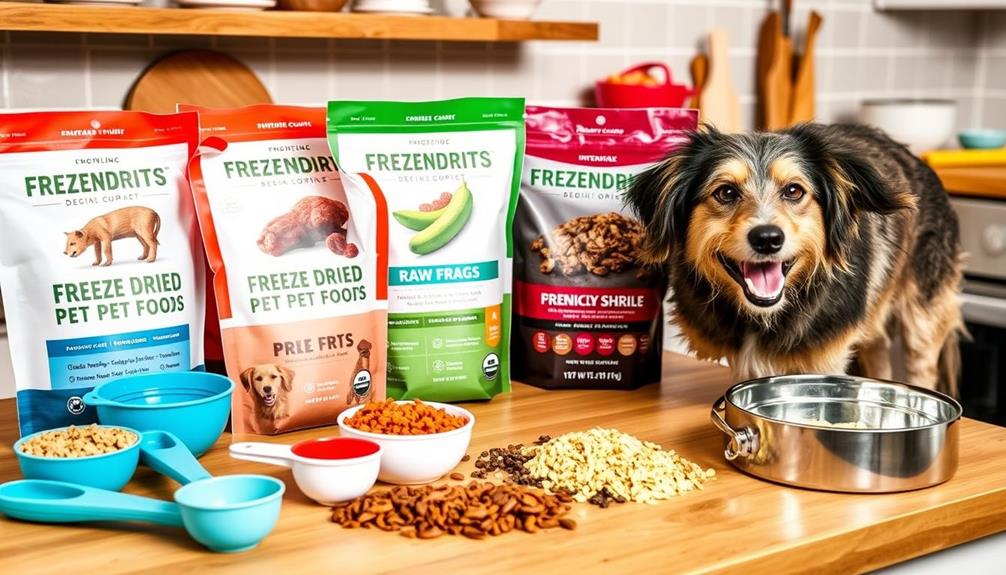
When it comes to feeding your dog freeze-dried raw food, following the recommended serving sizes based on your dog's ideal weight is key to maintaining balanced nutrition.
Critical periods identified for skill acquisition and learning in development also apply when shifting your pet to a new diet, as gradual changes can help them adapt more easily. Start by checking the packaging for specific feeding guidelines, as some freeze-dried products can be served dry, while others may need rehydration with water for a few minutes before feeding.
To help your dog adjust, introduce the freeze-dried food gradually over a shift period of about 7-10 days. This approach can minimize the risk of digestive upset. During this time, regularly monitor your dog's weight and health, adjusting the serving sizes as needed to meet their nutritional needs.
It's always a good idea to consult with a veterinarian for personalized advice tailored to your dog's specific requirements. They can help guarantee that the freeze-dried food you choose meets all of your dog's nutritional needs and advise on any necessary adjustments during the shift.
Frequently Asked Questions
Do Vets Recommend Freeze-Dried Raw?
Many vets express caution about freeze-dried raw food. They often highlight concerns around pathogens and nutritional balance. It's best to consult your veterinarian to determine what diet's right for your pet's specific needs.
Is Freeze-Dried Raw Just as Good as Raw?
You'll find freeze-dried raw food offers similar nutritional benefits as traditional raw diets. It retains nutrients effectively, but you should always handle it properly to minimize any potential risks associated with pathogens. When prepared and handled correctly, freeze-dried raw food for dogs can provide all the benefits of raw food for dogs, including improved digestion, healthier skin and coat, and increased energy levels. Additionally, the convenience of freeze-dried raw food makes it an attractive option for pet owners who want to provide a natural and nutritious diet for their dogs without the hassle of handling and preparing traditional raw meats. Overall, freeze-dried raw food offers a safe and convenient way to feed your dog a diet rich in nutrients and essential enzymes.
What Are the Disadvantages of Freeze-Dried Food?
When considering freeze-dried food, you might find it's expensive and requires rehydration. There's also a risk of pathogens and incomplete nutrition, plus some dogs may struggle with digestion compared to fresher options.
Does Freeze-Dried Raw Still Have Bacteria?
Yes, freeze-dried raw food can still have bacteria like Salmonella and E. coli. The process reduces moisture but doesn't eliminate pathogens. You must handle and store it properly to minimize foodborne illness risks. When handling freeze-dried raw food, make sure to wash your hands and any surfaces that come into contact with the food. Additionally, keep the food sealed in an airtight container in a cool, dry place to prevent bacterial growth. Follow these raw food storage tips to ensure the safety of you and your family when consuming freeze-dried raw food.
Conclusion
To sum up, freeze-dried raw food can be an incredible option for your dog, offering the nutrition of fresh food without the hassle. While it comes with some drawbacks, like cost and rehydration, the benefits often outweigh them. By choosing high-quality products and following feeding guidelines, you'll set your pup up for a tail-wagging, healthy life. So, if you want your dog to feel like a superstar, consider giving freeze-dried raw food a try!

